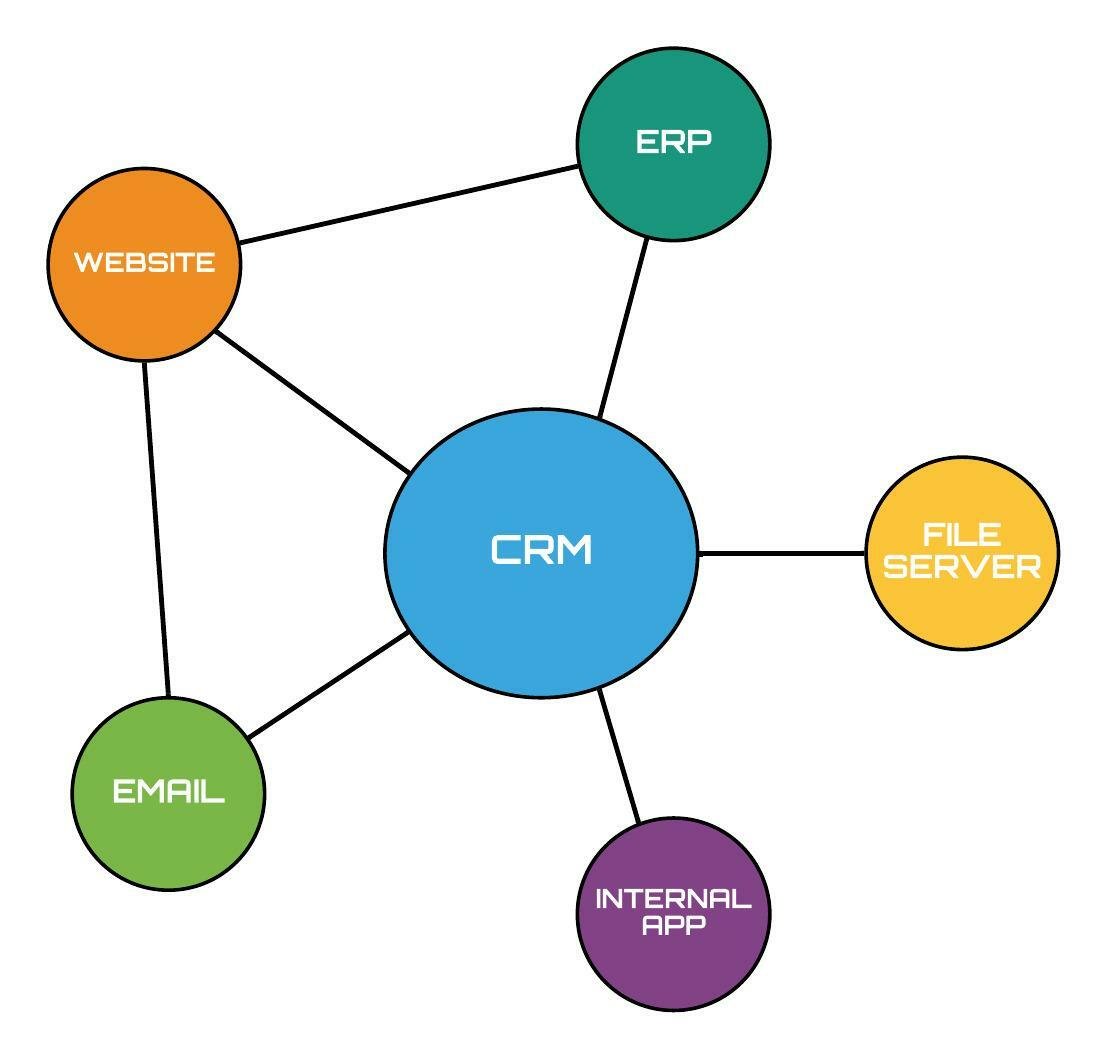Think your organization doesn’t need systems integration? You may be right. Then again….
What is Automated Systems Integration and Why Do I Need It?
While the term ‘Systems Integration’ may seem clear, let’s start by stating how it’s defined for purposes of this article. Systems Integration is simply the sharing of data between business applications. If your current processes aren’t taking advantage of some level of automated data integration, you may not be realizing optimal operational effectiveness. In addition, employees spending countless hours manually entering data may not be reaching their full potential. In both cases, enhancing your level of automation can go a long way to improving your overall business health.

Sample integration between CRM system and external applications.
- Leads come into CRM from website.
- Marketing funnel emails distributed to potential customers.
- Closed-Won Accounts / Opportunities sent to ERP for invoicing.
- Onboarding data sent to internal systems for additional processing.
- Data exported to Business Intelligence reporting system for enterprise level reporting.
Benefits of Integration:
Speed of Data Availability – In many aspects, automation equals instant, or nearly instant, availability of data. For example, in the current process, a sales rep closes on an opportunity and updates the CRM system with the Closed-Won deal. Sales then notifies operations to deliver goods and services, followed by finance to invoice the customer. In an automated process, the Professional Services team is notified immediately upon the opportunity being closed as won. Details of the customer and transaction are also directly imported into the ERP system for invoicing by the Finance Team.
Integrity of Data – Face it, data entry mistakes happen. Occasionally, data needs to be transformed from system to system to meet business rule constraints. Automated data migration is not prone to any user data entry errors.
Visibility of Data – The correct data in front of the right person at the right time is crucial. When employees need to request information from other departments in order to make informed decisions, processes stall. For example: does sales need to be aware a customer is delinquent on their payments before quoting additional products / services? Perhaps the services team needs planning data for potential projects resulting from sales when an opportunity reaches a certain stage. Automation gets information to those who need it.
Employee Skill Maximization – This is potentially the most unheralded and least appreciated aspect of automated system integration. Unless your organization employs a dedicated data entry team to migrate data from one system to another (see Integrity of Data above), your task-specific skilled employees are spending their time performing data entry. How many hours are they spending each day / week / month on data entry while being compensated at their primary function rate? What tasks could they be doing with that time?
Single Source of Truth – When data flows automatically from one system to other systems, data can be updated in a single place. With all other systems being updated automatically, the source system becomes the single source of that data, and can be used to update all downstream systems with a single modification.
Allows for Best of Breed Applications – Depending on your line of business, you may be tempted to use a one-size-fits-all application promising to address every aspect of your business. While this type of application certainly deserves consideration, chances are it lacks the more advanced features of the best of breed applications designed for a particular purpose. For example; sales teams typically use CRM applications such as Salesforce due to their flexibility and wide selection of add-on features. Finance teams may use tools such as Quickbooks, NetSuite, or Intact for ERP purposes. The seamless integration of data between these systems allows functional business areas to use the applications at which they’ve become expert without having to sacrifice functionality.
Let’s discuss how your business can benefit from an automated system integration plan. Simply fill out the form below to receive a no obligation, no cost exploratory session to discover how automation may benefit your business.

This blog highlights some examples of useful Salesforce integrations.
Create Dynamic Links to External System Records in NetSuite.
Automatically integrate website leads into external systems such as Salesforce



